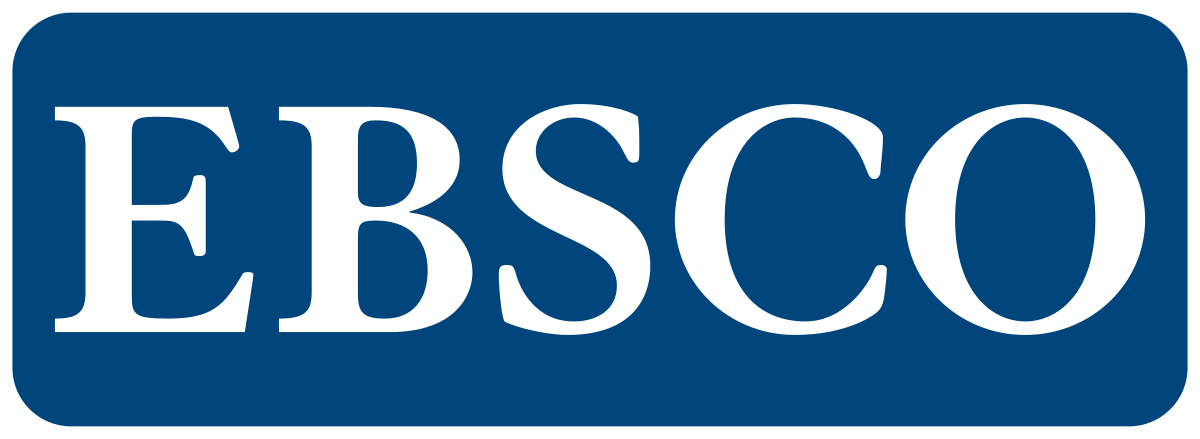Effect of Cold Storage Duration on the Quality of Super Red (Hylocerus costaricensis) and White (Hylocerus undatus) Dragon Fruits
DOI:
https://doi.org/10.23960/jtep-l.v14i1.39-48 Abstract View: 270
Abstract View: 270
Abstract
Postharvest storage is carried out to control the metabolic rate so the quality of fruits can be maintained properly until it reaches the costumers. Cold storage can reduce metabolic reactions, such as respiration and transpiration. However, storing too long in cold temperatures can cause the quality of the fruit to deteriorate. Each type of dragon fruit has different chemical contents that will affect the quality of fruits after storage. This study aims to determine the effect of the type of dragon fruit, cold storage duration, and interaction between the two treatments. Both type of dragon fruit are packed in PP plastic and then stored at 10°C. Observation were made at different storage durations. This study used RAL, with the first being super red and white dragon fruits. The second factor was storage duration of 0, 7, 14, and 21 days. Data were analyzed using ANOVA and continued with DMRT if it had a significant effect. The result of the study showed that the treatment of fruit type had significant effect on antioxidant activity, vitamin C content, and total sugar level. Storage duration treatment had significant effect on antioxidant activity and vitamin C content.
Keywords: Antioxidant activity, Cold storage, Dragon fruit, Post-harvest, Vitamin c.
Downloads
References
Apriliyani, S.A., Martono, Y., Riyanto, C.A., Mutmainah, M., & Kusmita, K. (2018). Validation of UV-VIS spectrophotometric methods for determination of insulin levels from lesser yam (Dioscorea esculenta L.). Jurnal Kimia Sains dan Aplikasi, 21(4), 161–165. https://doi.org/10.14710/jksa.21.4.161-165
Attar, Ş.H., Gündeşli, M.A., Urün, I., Kafkas, S., Kafkas, N.E., Ercisli, S., Ge, C., Mlcek, J., & Adamkova, A. (2022). Nutritional analysis of red-purple and white-fleshed pitaya (Hylocereus) Species. Molecules, 27(3). https://doi.org/10.3390/molecules27030808
Badarinath, A.V., Rao, K.M., Madhu, C., Chetty, S., Ramkanth, S., Rajan, T.V.S., & Gnanaprakash, K. (n.d.). A Review on in-vitro antioxidant methods: Comparisions, correlations and considerations. International Journal of PharmTech Research CODEN, 2(2), 1276-1285.
Bulley, S.M., Rassam, M., Hoser, D., Otto, W., Schünemann, N., Wright, M., MacRae, E., Gleave, A., & Laing, W. (2009). Gene expression studies in kiwifruit and gene over-expression in Arabidopsis indicates that GDP-L-galactose guanyltransferase is a major control point of vitamin C biosynthesis. Journal of Experimental Botany, 60(3), 765–778. https://doi.org/10.1093/jxb/ern327
Giovannini, A., Venturi, M., Gutiérrez‐gordillo, S., Manfrini, L., Corelli‐grappadelli, L., & Morandi, B. (2022). Vascular and transpiration flows affecting apricot (Prunus armeniaca L.) fruit growth. Agronomy, 12(5). https://doi.org/10.3390/agronomy12050989
Guo, Z., Cai, L., Liu, C., Chen, Z., Guan, S., Ma, W., & Pan, G. (2022). Low-temperature stress affects reactive oxygen species, osmotic adjustment substances, and antioxidants in rice (Oryza sativa L.) at the reproductive stage. Scientific Reports, 12(1). https://doi.org/10.1038/s41598-022-10420-8
Hancock, R.D., Mcrae, D., Haupt, S., & Viola, R. (2003). Synthesis of L-ascorbic acid in the phloem. BMC Plant Biology, 3(7). http://www.biomedcentral.com/1471-2229/3/7
Hazarika, B., Angami, T., Thokchom, A., Hazarika, B.N., & Angami, T. (2019). Dragon fruit-An advanced potential crop for Northeast India. Agriculture & Food: e-Newsletter, 1(4).
https://www.researchgate.net/publication/332180519
Hossain, M., Numan, S.M., & Akhtar, S. (2021). Cultivation, nutritional value and health benefits of dragon fruit (Hylocereus spp.): A review. International Journal of Horticultural Science and Technology Journal, 8(3), 259-269. http://dx.doi.org/10.22059/ijhst.2021.311550.400
Hussein, Z., Fawole, O.A., & Opara, U.L. (2020). Harvest and postharvest factors affecting bruise damage of fresh fruits. Horticultural Plant Journal, 6(1), 1–13. https://doi.org/https://doi.org/10.1016/j.hpj.2019.07.006
Imamah, N., Hasbullah, R., & Nugroho, L. (2016). Arrhenius model to predict respiration rate of minimally processed broccoli. Jurnal Keteknikan Pertanian, 04(1), 25–30.
Kasso, M., & Bekele, A. (2018). Post-harvest loss and quality deterioration of horticultural crops in Dire Dawa Region, Ethiopia. Journal of the Saudi Society of Agricultural Sciences, 17(1), 88–96. https://doi.org/10.1016/j.jssas.2016.01.005
Khafid, A., Nurchayati, Y., Hastuti, E.D., & Setiari, N. (2023). Vitamin C and total soluble solid content of crystal guava at different storage duration and ripeness. Kultivasi, 22(2). https://doi.org/10.24198/kultivasi.v22i2.44124
Khotimah, H., Agustina, R., & Ardana, M. (2018). Pengaruh lama penyimpanan terhadap aktivitas antioksidan ekstrak daun miana (Coleus atropurpureus L. Benth). Proceeding of Mulawarman Pharmaceuticals Conferences, 8, 1–7.
Lal Basediya, A., Samuel, D.V.K., & Beera, V. (2013). Evaporative cooling system for storage of fruits and vegetables - A review. Journal of Food Science and Technology, 50(3), 429–442. https://doi.org/10.1007/s13197-011-0311-6
Mallik, B., Hossain, M., & Rahim, A. (2018). Influences of variety and flowering time on some physio-morphological and chemical traits of dragon fruit (Hylocereus spp.). Journal of Horticulture and Postharvest Research, 1(2), 115–130. https://doi.org/10.22077/jhpr.2018.1492.1018
Molyneux, P. (2004). The use of the stable free radical diphenylpicryl-hydrazyl (DPPH) for estimating antioxidant activity. Songklanakarin J. Sci. Technol, 26(2), 212–219.
Muhammad, R.Z., Prihastanti, E., & Budihastuti, R. (2021). Pengaruh wadah dan suhu penyimpanan yang berbeda terhadap kematangan buah sawo (Manilkara zapota L.). Buletin Anatomi dan Fisiologi, 6(1), 42-48. https://doi.org/10.14710/baf.6.1.2021.42-48
Murtiwulandari, M., Archery, D.T.M., Haloho, M., Kinasih, R., Tanggara, L.H.S., Hulu, Y.H., Agaperesa, K., Khristanti, N.W., Kristiyanto, Y., Pamungkas, S.S., Handoko, Y.A., & Anarki, G.D.Y. (2020). Pengaruh suhu penyimpanan terhadap kualitas hasil panen komoditas Brassicaceae. Teknologi Pangan : Media Informasi dan Komunikasi Ilmiah Teknologi Pertanian, 11(2), 136–143. https://doi.org/10.35891/tp.v11i2.2168
Nataliani, M.M., Kosala, K., Fikriah, I., Isnuwardana, R., & Paramita, S. (2018). Pengaruh penyimpanan dan pemanasan terhadap stabilitas fisik dan aktivitas antioksidan larutan pewarna alami daging buah naga (Hylocereus costaricensis). Jurnal Tumbuhan Obat Indonesia, 11(1), 1-10.
Nerd, A., Gutman, F., & Mizrahi, Y. (1999). Ripening and postharvest behaviour of fruits of two Hylocereus species (Cactaceae). Postharvest Biology and Technology, 17(1), 39-45. https://doi.org/10.1016/S0925-5214(99)00035-6
Perla, V., Nimmakayala, P., Nadimi, M., Alaparthi, S., Hankins, G.R., Ebert, A.W., & Reddy, U.K. (2016). Vitamin C and reducing sugars in the world collection of Capsicum baccatum L. genotypes. Food Chem, 202, 189–198. https://doi.org/10.1016/j.foodchem.2016.01.135
Pizzino, G., Irrera, N., Cucinotta, M., Pallio, G., Mannino, F., Arcoraci, V., Squadrito, F., Altavilla, D., & Bitto, A. (2017). Oxidative stress: Harms and benefits for human health. Oxidative Medicine and Cellular Longevity, 2017, 8416763, 13 pages. https://doi.org/10.1155/2017/8416763
Raza, A., Charagh, S., Najafi-Kakavand, S., Abbas, S., Shoaib, Y., Anwar, S., Sharifi, S., Lu, G., & Siddique, K.H.M. (2023). Role of phytohormones in regulating cold stress tolerance: Physiological and molecular approaches for developing cold-smart crop plants. Plant Stress, 8, 100152. https://doi.org/10.1016/j.stress.2023.100152
Saputri, C.W.E., Pudja, I.A.R.P., & Kencana, P.K.D. (2020). Effect of cold storage time and temperature treatment on quality of cauliflower (Brassica oleracea L. var. botrytis). Jurnal BETA, 8(1), 138–144.
Setyaputri, N.A., & Kurnia, T.D. (2019). Pengaruh pelapisan kitosan dan perlakuan pengemasan terhadap masa simpan brokoli (Brassica oleracea var. Italica). AGROSAINSTEK: Jurnal Ilmu dan Teknologi Pertanian, 3(2), 65–72. https://doi.org/10.33019/agrosainstek.v3i2.76
Sharifi-Rad, M., Kumar, N.V.A., Zucca, P., Varoni, E.M., Dini, L., Panzarini, E., Rajkovic, J., Tsouh Fokou, P.V., Azzini, E., Peluso, I., Mishra, A.P., Nigam, M., El Rayess, Y., El Beyrouthy, M., Polito, L., Iriti, M., Martins, N., Martorell, M., Docea, A.O., Setzer, W.N., Calina, D., Cho, W.C., & Sharifi-Rad, J. (2020). Lifestyle, oxidative stress, and antioxidants: Back and forth in the pathophysiology of chronic diseases. Frontiers in Physiology, 11, 694. https://doi.org/10.3389/fphys.2020.00694
Sutrisno, & Purwanto, E.G.M. (2011). Kajian penyimpanan buah naga (Hylocereus costaricensis) dalam kemasan atmosfer termodifikasi. Jurnal Keteknikan Pertanian, 25(2), 127–132.
Tsaniklidis, G., Delis, C., Nikoloudakis, N., Katinakis, P., & Aivalakis, G. (2014). Low temperature storage affects the ascorbic acid metabolism of cherry tomato fruits. Plant Physiology and Biochemistry, 84, 149-157. https://doi.org/10.1016/j.plaphy.2014.09.009
Valenzuela, J.L., Manzano, S., Palma, F., Carvajal, F., Garrido, D., & Jamilena, M. (2017). Oxidative stress associated with chilling injury in immature fruit: Postharvest technological and biotechnological solutions. International Journal of Molecular Sciences, 18(7), 1467. https://doi.org/10.3390/ijms18071467
Wahdaningsih, S., Prawita Setyowati, E., Wahyuono, S. (2011). Free radical scavenging activity of (Alsophila Glauca J. Sm). Majalah Obat Tradisional, 16(3).
Widodo, W.D., Suketi, K., & Maulida, F. (2020). Studi degreening, kesegaran, dan daya simpan buah naga merah (Hylocereus polyrhizus (Weber) Britton & Rose) untuk menentukan kriteria panen optimum. Jurnal Agronomi Indonesia (Indonesian Journal of Agronomy), 48(3), 314-322. https://doi.org/10.24831/jai.v48i3.33065
Wucher, H., Klingshirn, A., Brugger, L., Stamminger, R., Kölzer, B., Engstler, A., & Gindele, T. (2021). Evaluation of humidity retention in refrigerator storage systems by application of a food simulant. International Journal of Refrigeration, 130, 161–169. https://doi.org/10.1016/j.ijrefrig.2021.05.017
Yang, S., & Lian, G. (2020). ROS and diseases: Role in metabolism and energy supply. Mol Cell Biochem, 467, 1–12. https://doi.org/10.1007/s11010-019-03667-9
Yuniarto, K., Lastriyanto, A., Muvianto, C.M.O., & Nurtiti. (2021). Studi respirasi belimbing wuluh menggunakan modifikasi udara pasif. Jurnal Keteknikan Pertanian, 9(2), 57–64. http://dx.doi.org/10.19028/jtep.09.2.57-64
Downloads
Published
How to Cite
Issue
Section
License
Authors who publish with this journal agree to the following terms:
Authors retain copyright and grant the journal right of first publication with the work simultaneously licensed under a Creative Commons Attribution-ShareAlike 4.0 International Lice that allows others to share the work with an acknowledgement of the work's authorship and initial publication in this journal.
Authors are able to enter into separate, additional contractual arrangements for the non-exclusive distribution of the journal's published version of the work (e.g., post it to an institutional repository or publish it in a book), with an acknowledgement of its initial publication in this journal.
Authors are permitted and encouraged to post their work online (e.g., in institutional repositories or on their website) prior to and during the submission process, as it can lead to productive exchanges, as well as earlier and greater citation of published work (See The Effect of Open Access).
Jurnal Teknik Pertanian Lampung

JTEPL is licensed under a Creative Commons Attribution-ShareAlike 4.0 International License.













